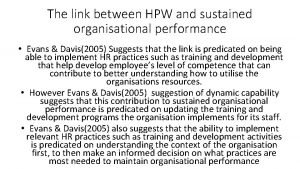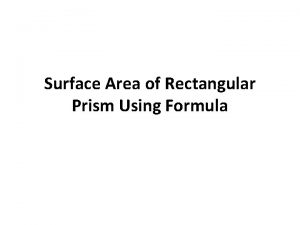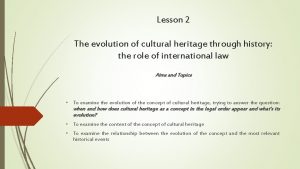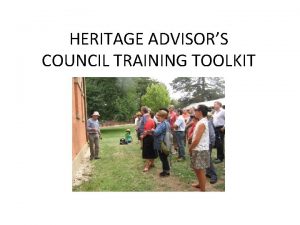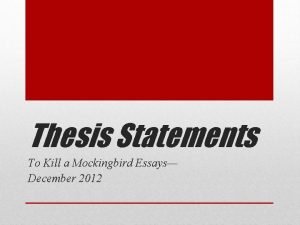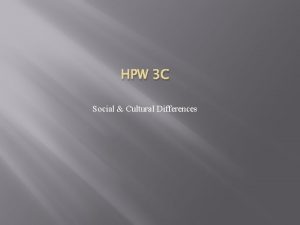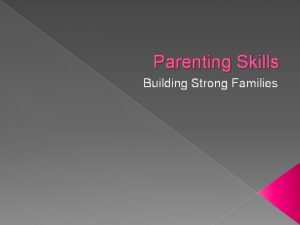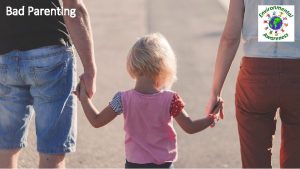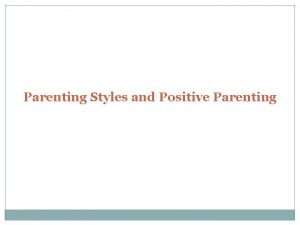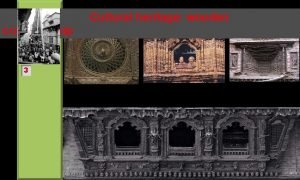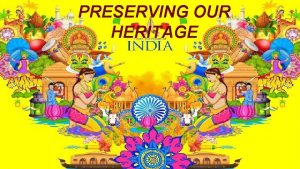CULTURAL HERITAGE PARENTING HPW 3 C What is












- Slides: 12

CULTURAL HERITAGE & PARENTING HPW 3 C

What is Cultural Heritage? Canada is a multicultural nation. By its formation, bilingualism and multiculturalism have helped to define what it means to be Canadians are folks with diverse cultural heritages and this continues to be an important part of the Canadian identity.

Where are your roots? Please come and put a star on the board projected map for every place where your family may roots. You may place as many stars as you like.

Map of the world http: //www. justmaps. org/

Culture The elements of culture also include the following: your ethnic group, religion, language, values, attitudes, and beliefs. Culture shapes a person’s personality and view of the world. Everyone is influenced by his or her own culture and of those around us; therefore, culture adds character to a community and uniqueness to individuals. Because of this, child-rearing can be described as a “cultural activity”. Even though there may be many approaches to child-rearing, all cultures the world over share common expectations for their children.

Let’s Discuss… Suggest 5 such common expectations parents have for their children regardless of culture. An example of such an expectation would be that their children must be educated.

What is Cultural Heritage? How cultural heritage and its meaning is interpreted in families and social groups differs widely throughout Canada. Parents are the first people to transmit their culture to their children. Sometimes this can happen even before they are born. The specific expectations they have for their children, their religious beliefs, the practices they follow, all have a cultural importance

What is Cultural Heritage? The essence of a person (individual level) Learned characteristics, beliefs, attitudes The behavioural patterns, arts, beliefs, and institutions of a group of people. (group level) Customs (practices) passed through generations Cultural Heritage determines your level of comfort in diverse situations “Culture is simply how one lives and is connected to history by habit ”

Let’s Discuss… List the many ways in which child-rearing is a “cultural activity”?

Transmitting Cultural Heritage to Children 1. Language: Mother language (first language) is the earliest dimension of cultural contact Studies have shown that there are cultural variations in the communication sounds of babies. Children are sometimes provided with additional schooling in a language of their heritage (i. e. Hebrew School, Greek School) Religions often have their own languages or elements of language (used for rituals, prayers, etc)

Transmitting Cultural Heritage to Children 2. Food: Food is closely linked to cultural identity. The touch, sight, smell, taste, (sound) become familiar and comforting. 3. Visual Learning: Rituals, art, and the performance of general tasks become ingrained at an early age. 4. Parenting Customs: Naming: androgynous* name vs gendered name Respect: for parents, for elders, for authority Boarding school vs living at home Playing games together vs parental observation *having both male and female characteristics. Could be a boy’s name or a girl’s name

Brief Cultural Outline Create a profile of yourself based on the cultural elements we have discussed so far. Outline 5 -10 traits of your personal culture. If possible, suggest where you may have “acquired” these traits. GO!
 Obstructed and unobstructed heritage
Obstructed and unobstructed heritage World heritage is our heritage slogan
World heritage is our heritage slogan Obstructed heritage and unobstructed heritage
Obstructed heritage and unobstructed heritage Sustainable organisational performance
Sustainable organisational performance How to find lateral area
How to find lateral area Intangible cultural heritage in the philippines ppt
Intangible cultural heritage in the philippines ppt The second rome
The second rome Cultural heritage meaning
Cultural heritage meaning Bendigo beehive building
Bendigo beehive building Intangible cultural heritage and sustainable development
Intangible cultural heritage and sustainable development Lemasters and defrain parenting styles
Lemasters and defrain parenting styles Thesis statement about parenting
Thesis statement about parenting Parenting assessment manual
Parenting assessment manual



